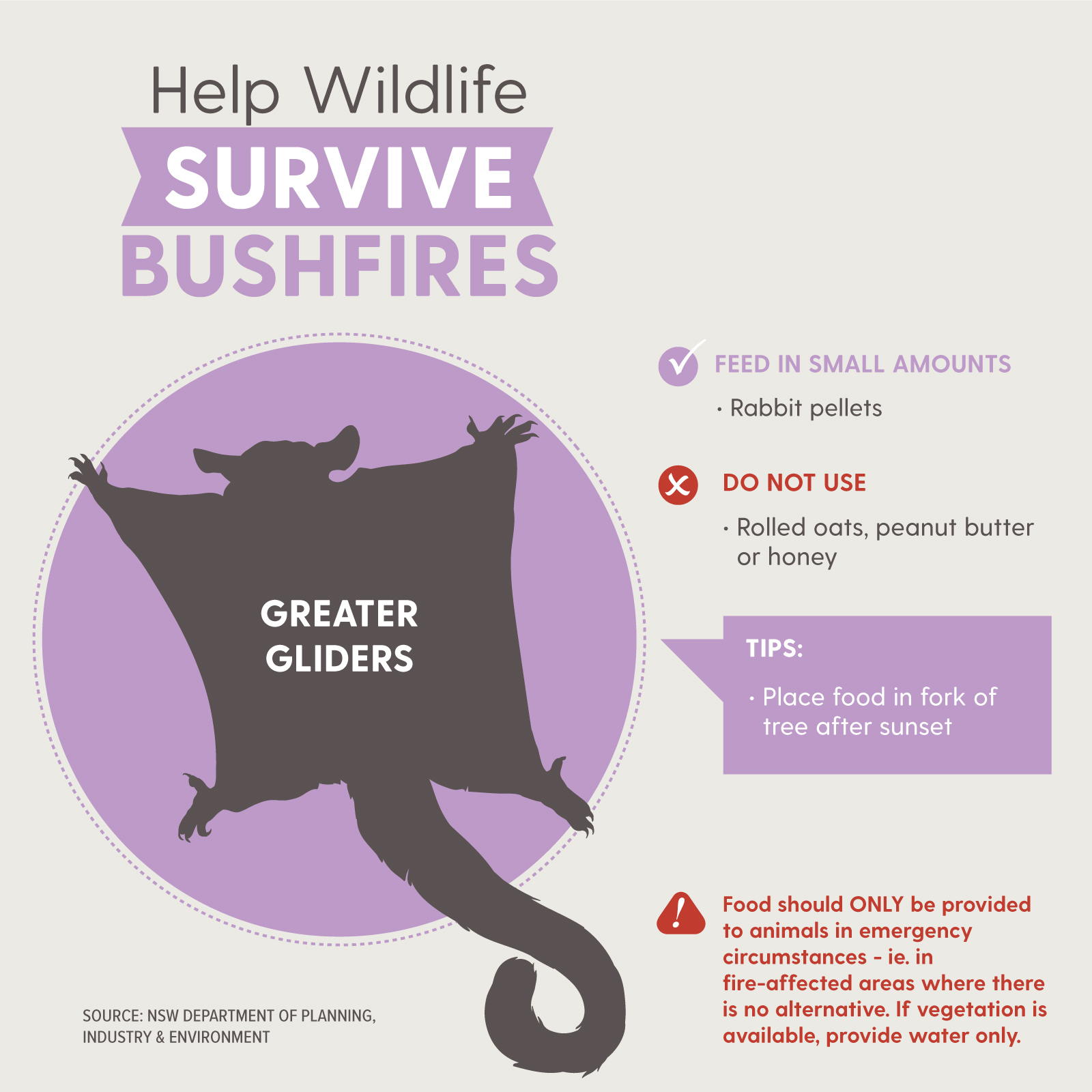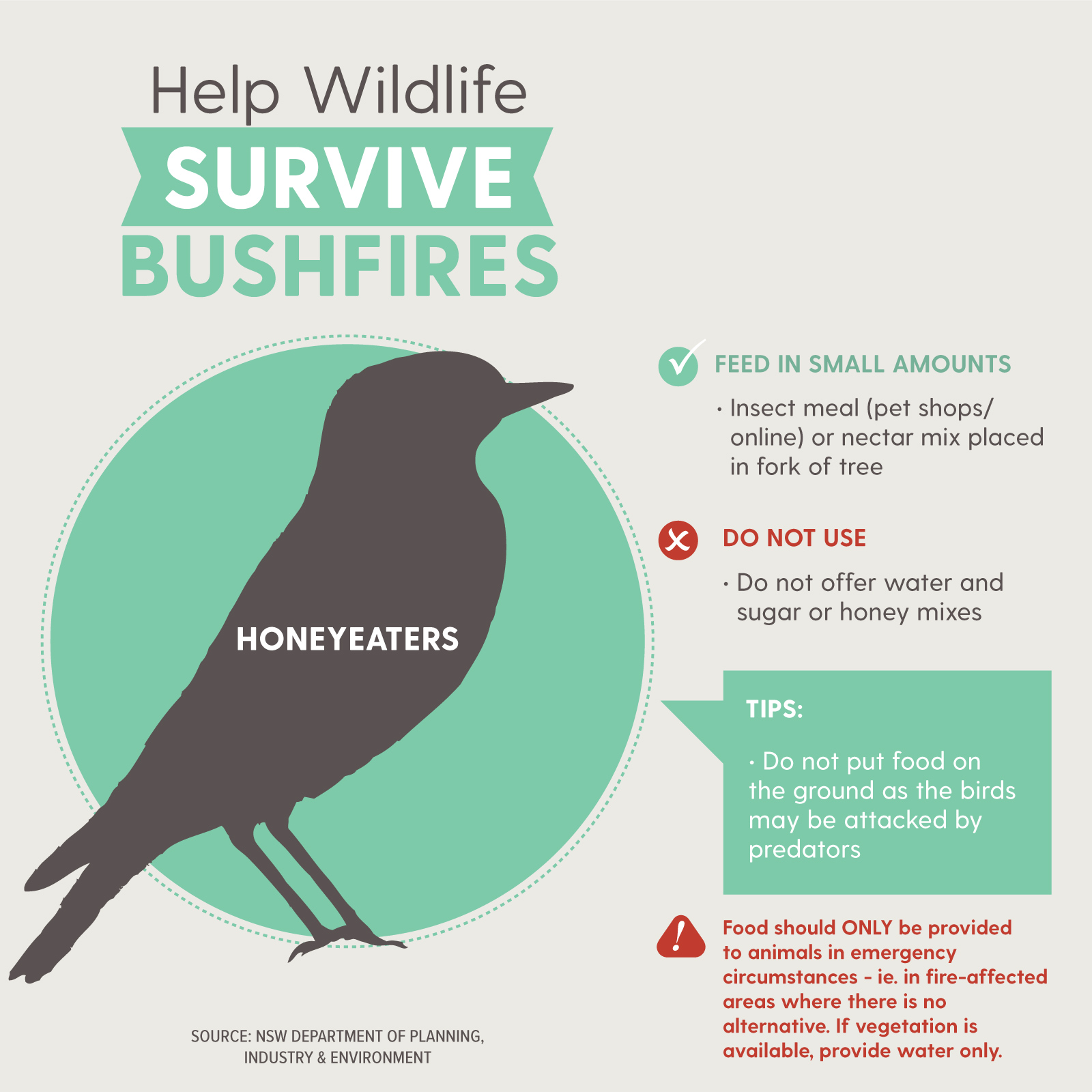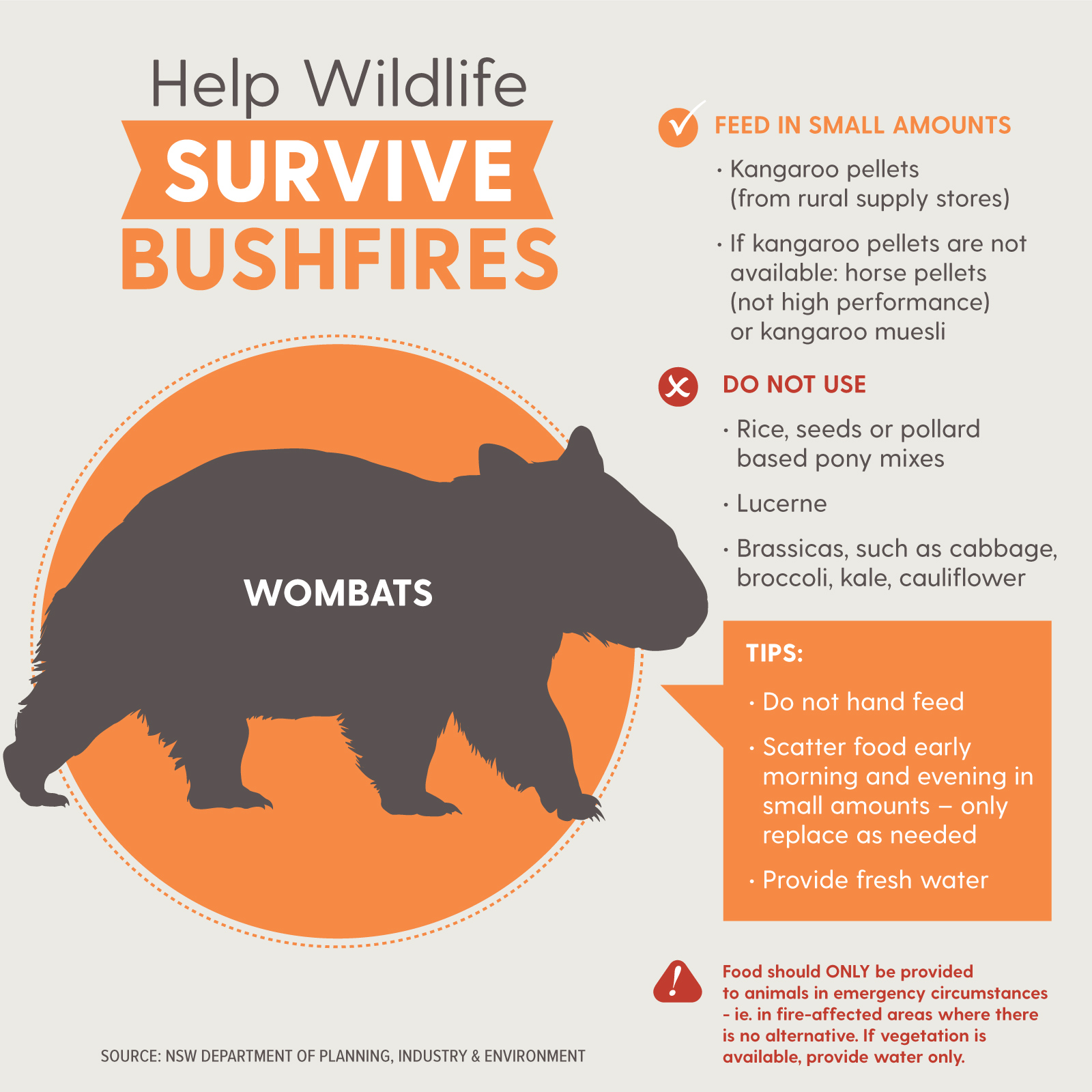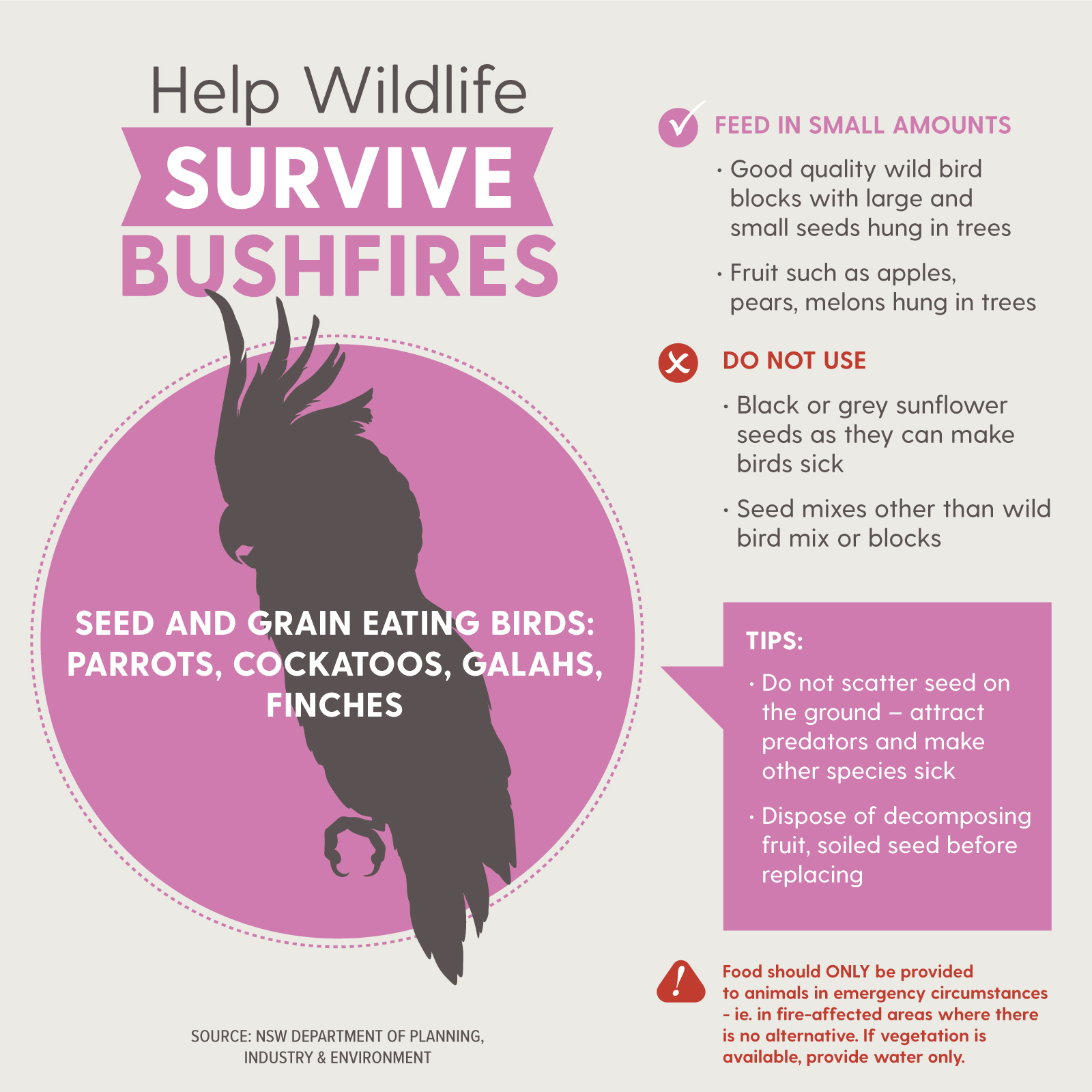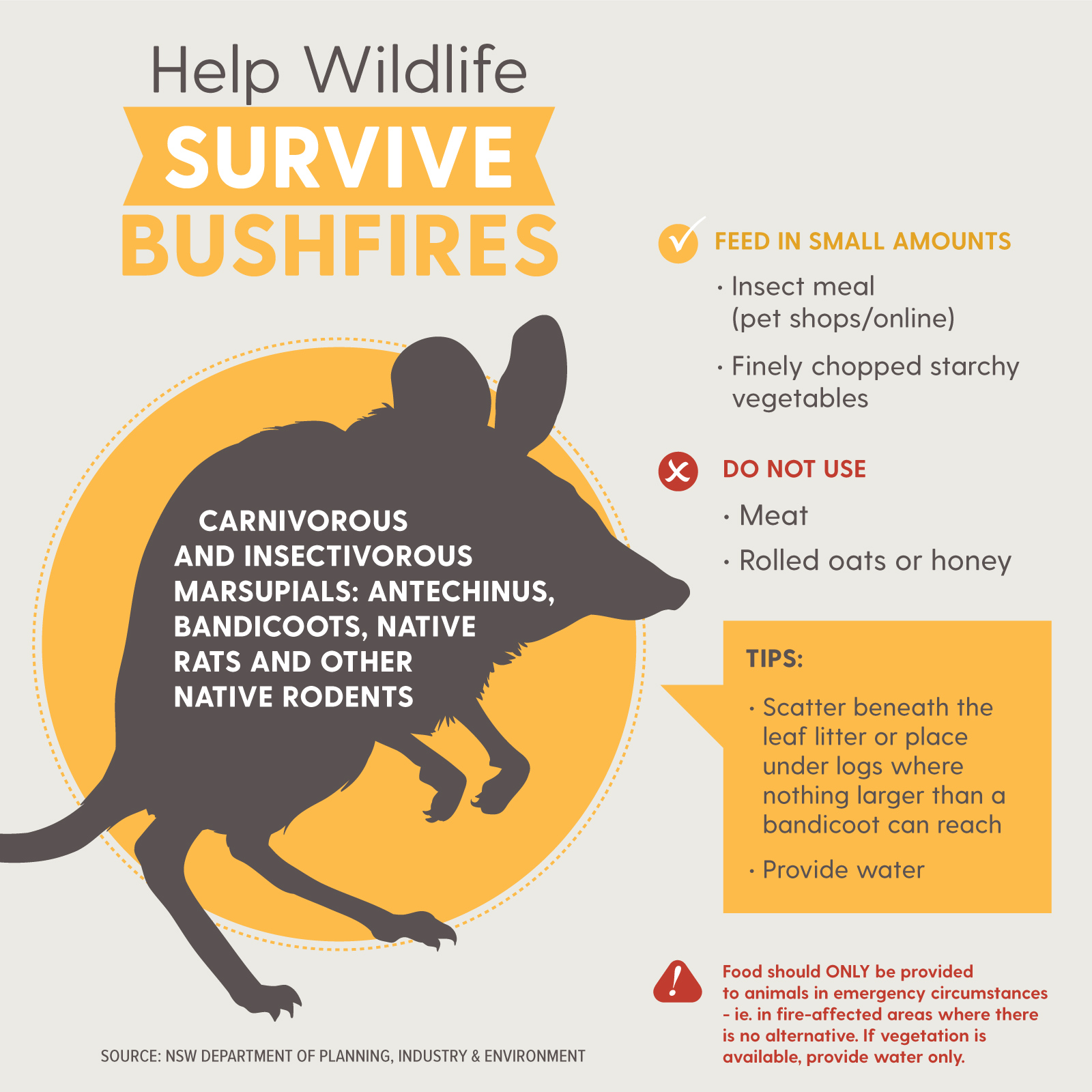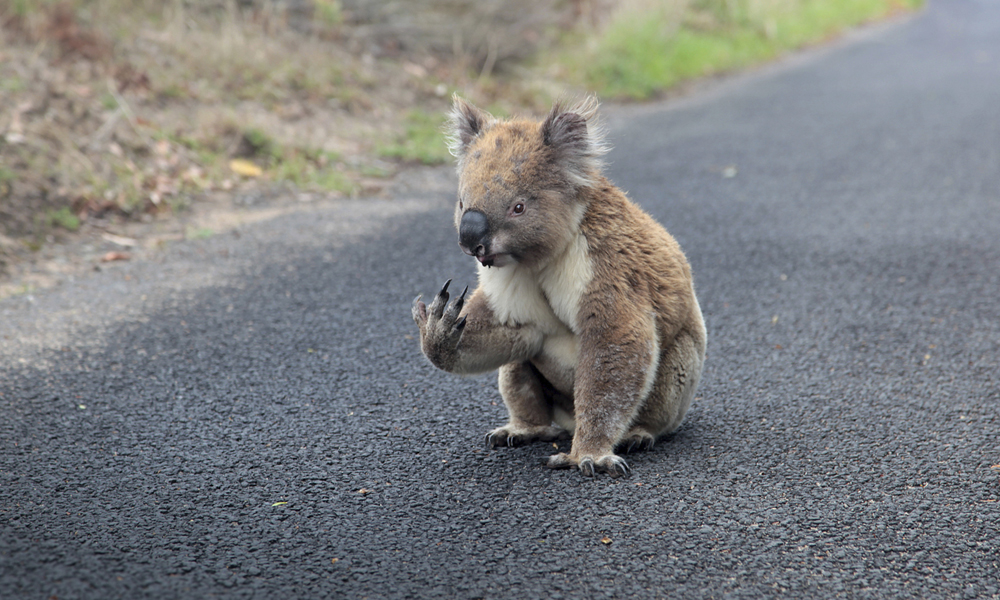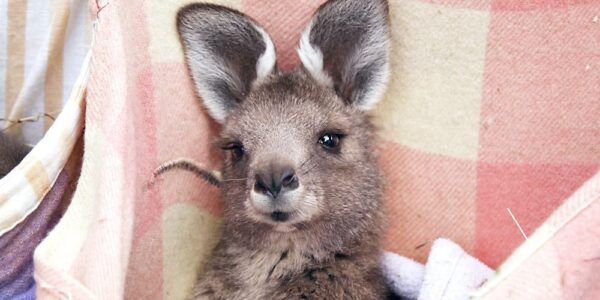Australia is in the midst of an unprecedented bushfire crisis. More than one billion native animals are estimated to have perished, and those lucky enough to survive have no homes or sources of food to return to.
When the imminent threat of the flames has subsided – the truth is, mass starvation events are now likely for these survivors. And while wildlife rescue organisations, animal protection charities and state governments are assisting with food drops and distribution – we can’t reach every single animal.
This guide is intended for people living in and around bushfire-affected areas where sources of food have been destroyed and surviving wildlife are at risk of starvation. Feeding of wildlife is not normally recommended, but the reality is that this is a crisis and during this emergency period, wildlife are going to need us to help them. So if you are in a bushfire-affected area and spot wildlife that are in clear need of assistance, these guides are intended to make sure that caring people are empowered with the knowledge they need to help these animals that might otherwise face starvation.
General tips about providing food to animals during a crisis
✔️ Always make sure clean water is provided
✔️ Wildlife should only ever be given food when there is absolutely no other option available to them – ie. after a natural disaster like a bushfire
Do not provide food if vegetation is growing in the area
Do not over-feed or leave excess food in the area
Never place food near roads
Species-specific emergency feeding guides
Click on each guide to open a larger version to download or print.
OR click here to download all guides in A2 poster format.
Information for these guides was taken from the NSW Department of Planning, Industry and Environment guides. For more detailed information about helping animals in fire-affected areas, head to their page about helping wildlife in emergencies.



